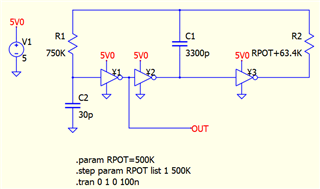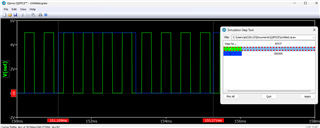Hello,
For a while now we have had a product that uses two CD4541 to set a clock period and pulse width. This is an old product that is predominately on through hole technology and I am currently updating it to surface mount. My surface mount conversion mostly worked flawlessly except the timing of the circuit seems to have drifted higher. In the part of the circuit that sets the period I am using Ctc = 3300pF and Rtc = 63.4kohms (with a 500k pot in series to allow adjusting of the period) and Rs = 750kohms; this has set the max Period to 480ms for years, but now it's between 505ms-520ms. Checking the math this doesn't work out quite right. 2.3 * 63.4kohms * 3300pF = 481us...not milliseconds. I suspect I am just not understanding how to calculate this properly as it's off by exactly a factor of 1000. I suspect there is something to do with the Rs value but I can't figure it out by reading the datasheet. Can you help me understand the math?



